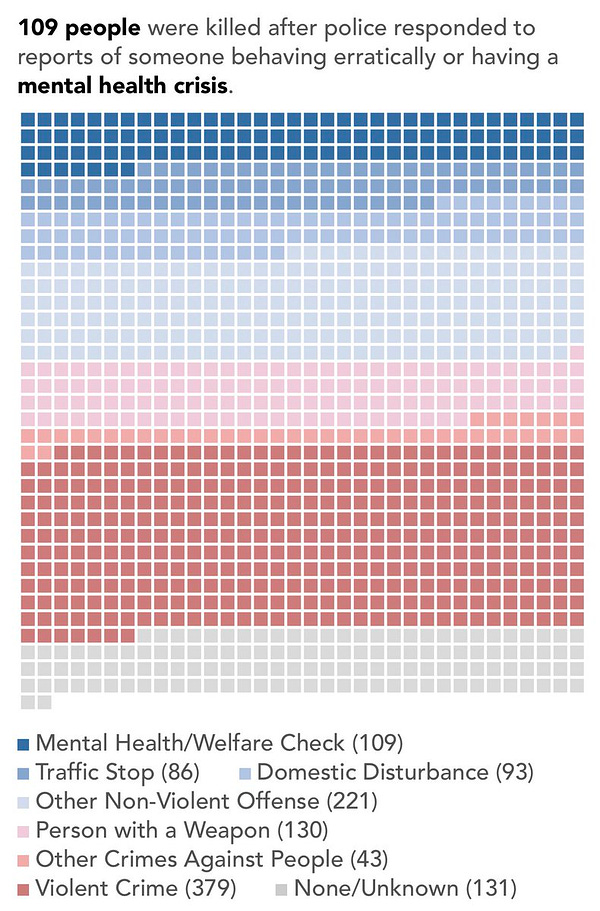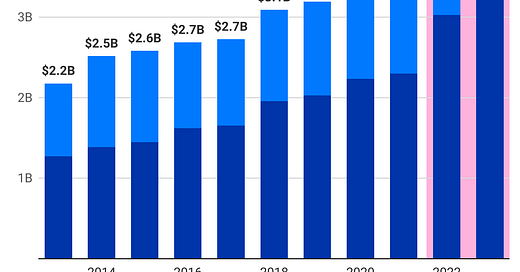Tracking federal subsidies to police
Speaking Security Newsletter | Note n°194 | 5 February 2023
If you find these notes useful, you can support this newsletter and SPRI, here.
Police violence
The number of people killed by police reached a decade high last year. Mapping Police Violence documented 1,192 killings by police in 2022, and found that officers were charged with a crime only one percent of the time. Another notable takeaway, via MPV’s founder (whose work I recommend following):


You can find MPV’s police violence report for 2022 here. If you’re interested in seeing the research that went into it (and one seriously impressive spreadsheet) you can download the data on their homepage.
Police subsidies
As police killings reached a ten-year high in 2022, federal subsidies to police did too. And there’s even more on the way this year.
The chart below shows police grant funding from FY2013 to FY2023. DOJ runs the State and Local Law Enforcement Assistance and Community Oriented Policing Services Office grant programs; DHS has the State Homeland Security Grant Program and Urban Area Security Initiative.1 There is variation between individual grants, but the net effect of all this money is enhanced police power and presence: it subsidizes the hiring of more officers, deployment of additional surveillance, vehicle and weapons purchases, and more.
This funding eclipsed $3 billion after Trump authorized a $368 million surge in his first budget. Not to be outdone, Biden’s one-year increase over Trump was nearly $800 million. Biden signed off on yet another spending boost—this time worth $105 million—for FY2023 in late December.
^Alt text for screen readers: Federal subsidies to police are at a ten-year high. This column chart displays the combined funding of Department of Justice and Department of Homeland Security police grant programs in two shades of blue from fiscal years 2013 to 2023. In this time, total police grant funding went from $2.2 billion to $4.5 billion. The biggest one-year jump in this stretch was from fiscal years 2021 to 2022, when Biden approved a nearly $800 million increase. His 2023 budget increases it again, this time by $105 million. Biden’s two budgets are highlighted in pink. Data via Justice and Homeland Security department budget requests and appropriations, and the Congressional Research Service.
-Stephen (@stephensemler; stephen@securityreform.org)
Find this note useful? Please consider becoming a supporter of SPRI. Unlike establishment think tanks, we rely exclusively on small donations.
*These four command the lion’s share of total federal assistance to state and local police departments. They’re the funding streams that contain the grants explicitly for police and policing. Police can potentially tap into peripheral funding streams, but for several grants it couldn’t be assumed that police would be the primary beneficiary or receive any funding at all (as opposed to businesses, nonprofits, or universities). Marginal funding is still funding, though, which means I undercounted the yearly totals expressed above. More accurate figures could theoretically be obtained by digging into how those grants are actually doled out—I was only looking at appropriations bills and other budget documents. Another reason I undercounted is because I excluded the non-fungible aid delivered through the 1033 program, which operates outside the normal annual appropriations process.




